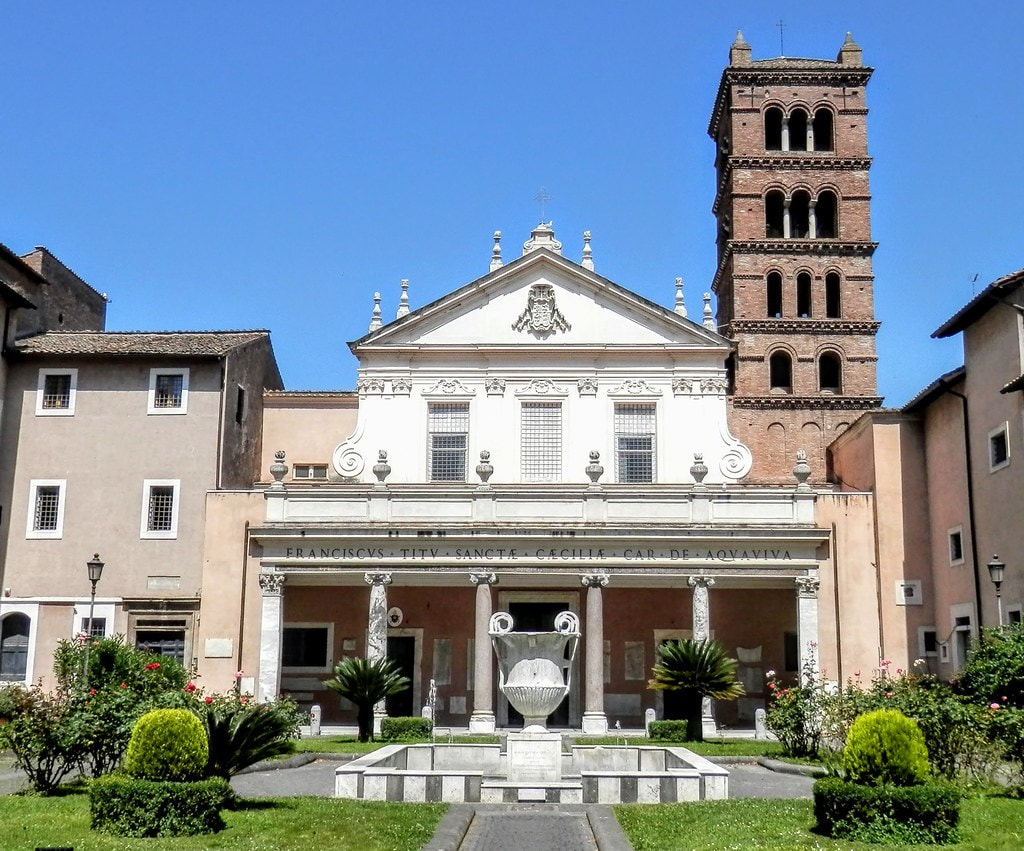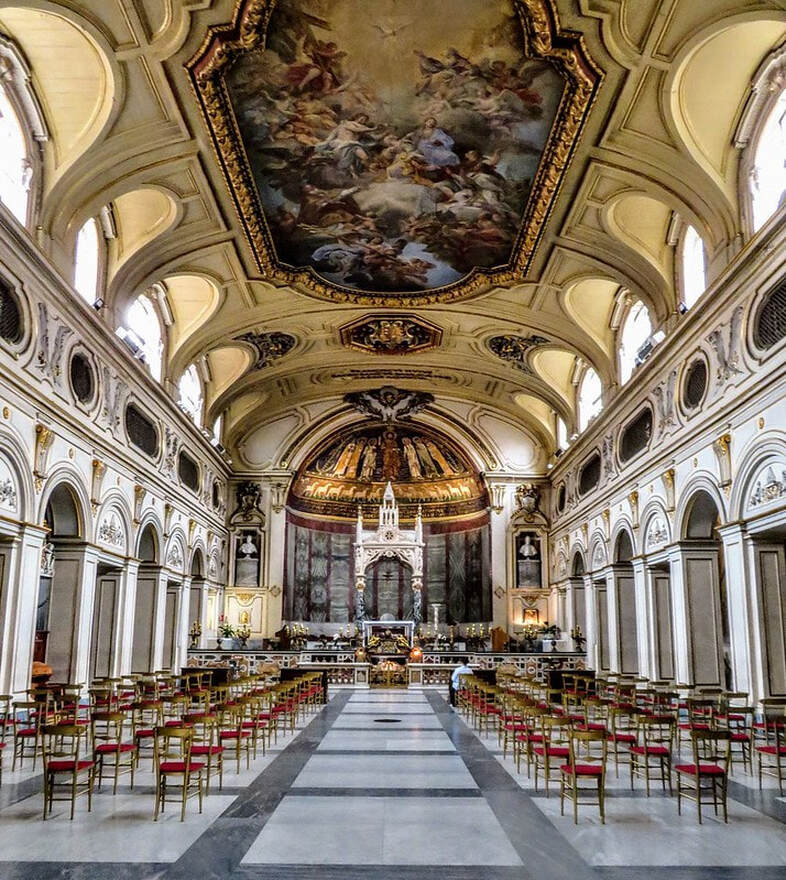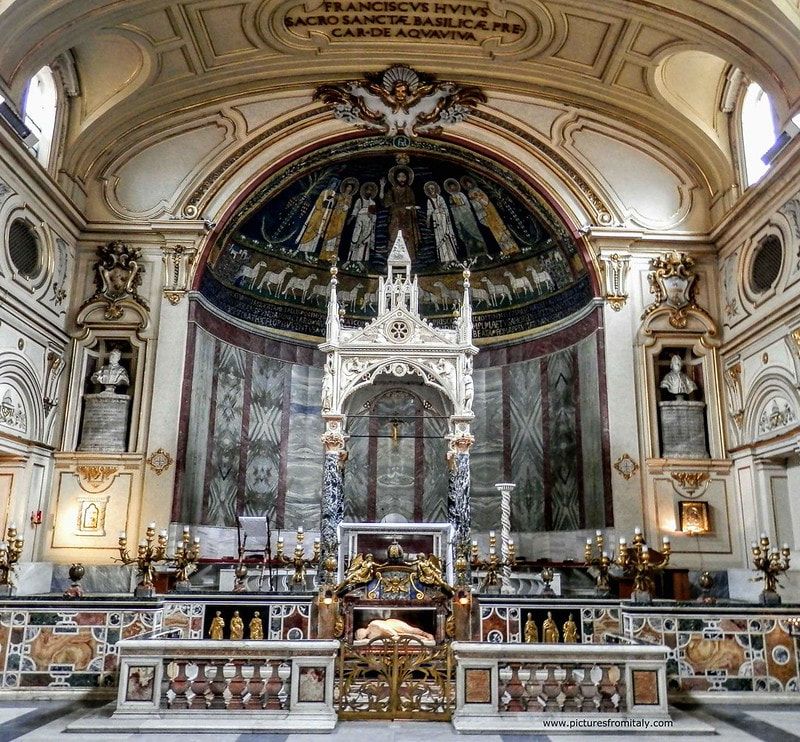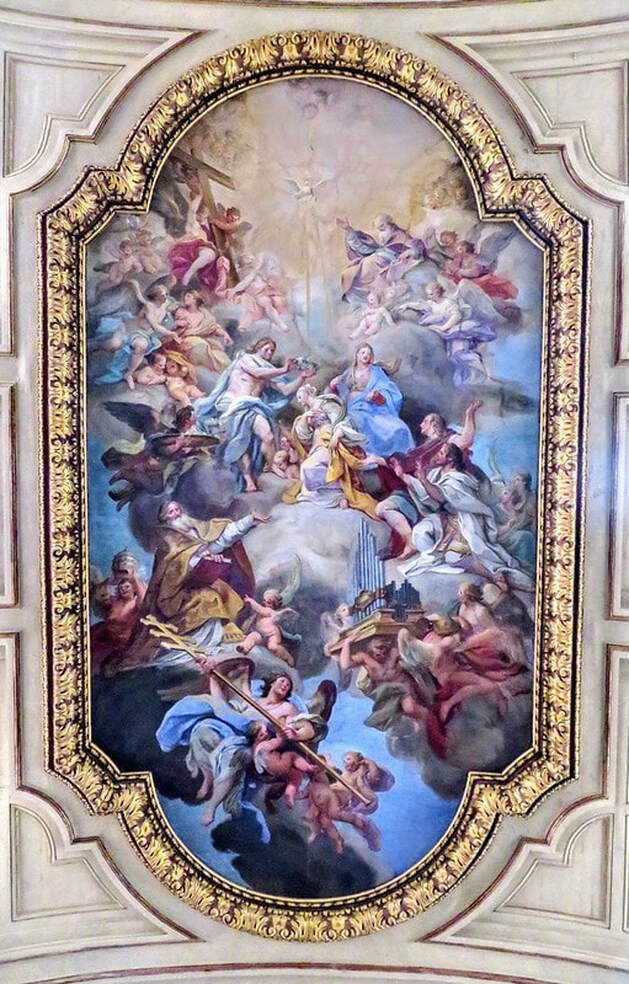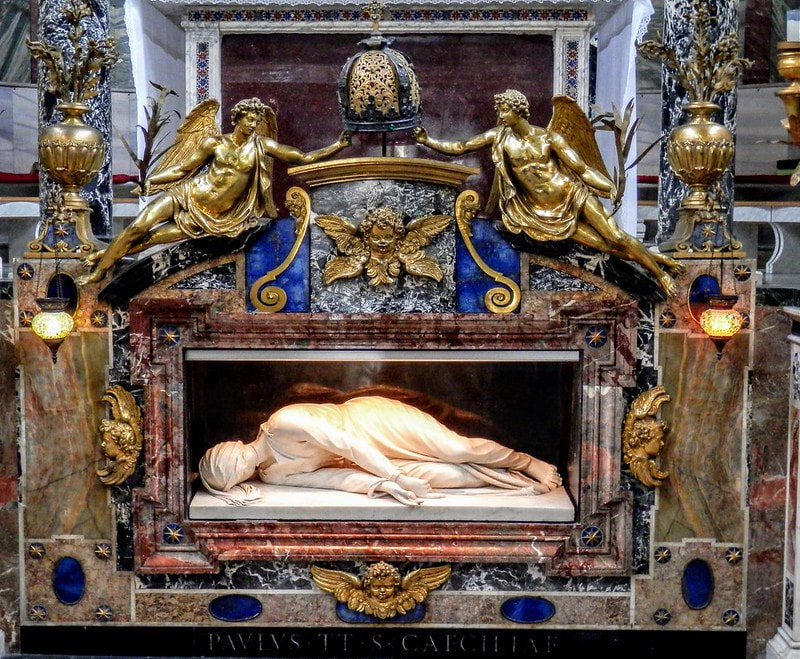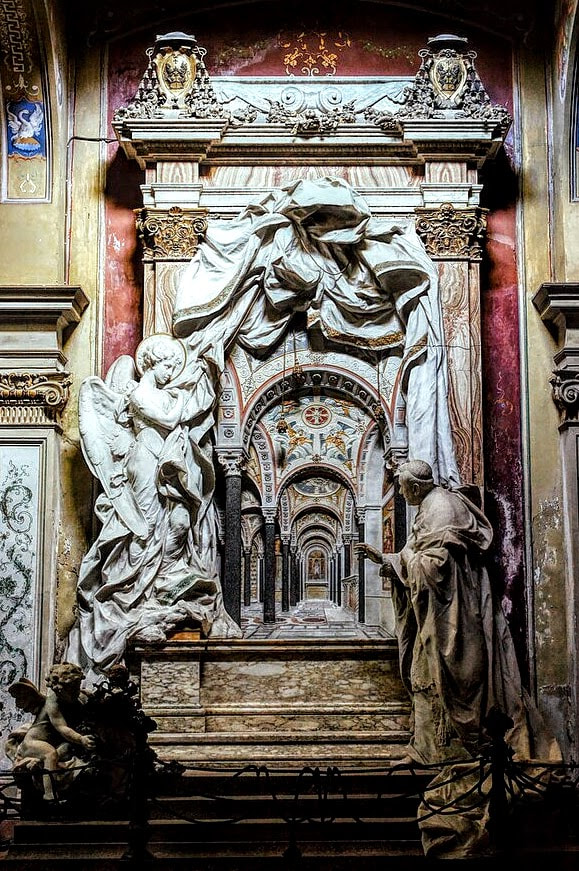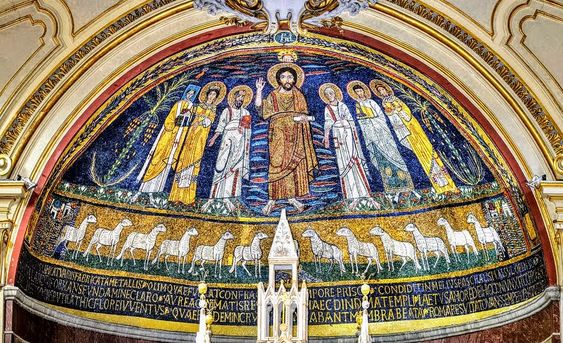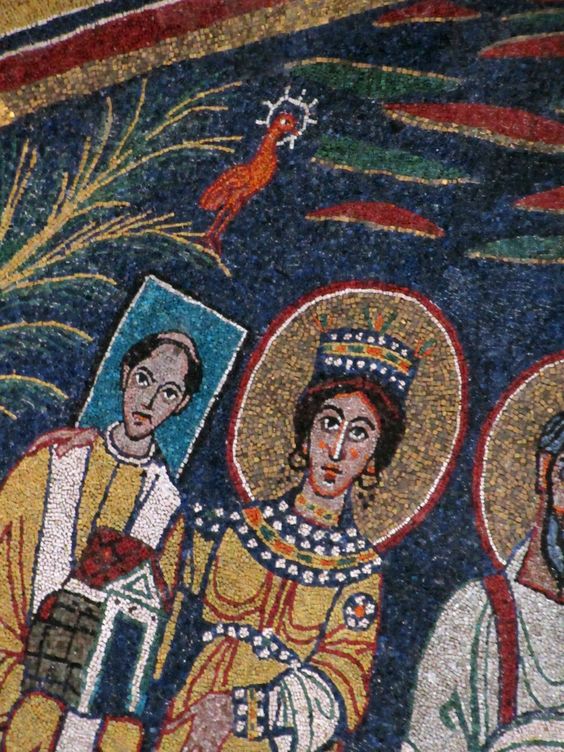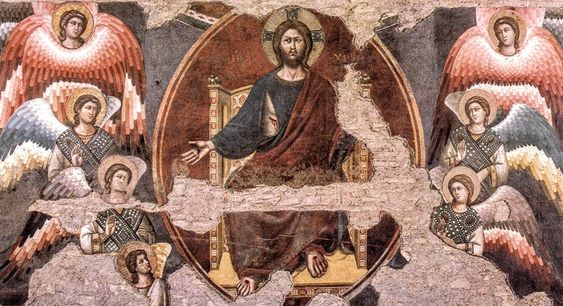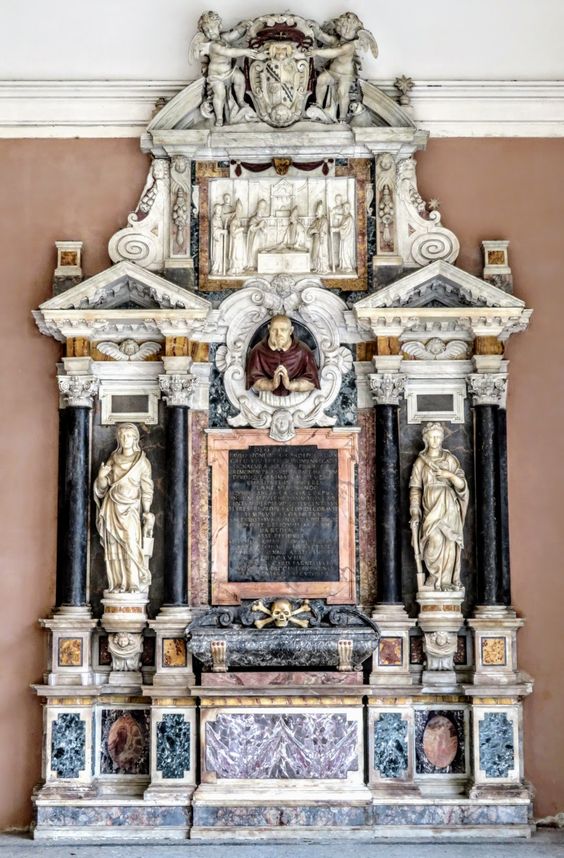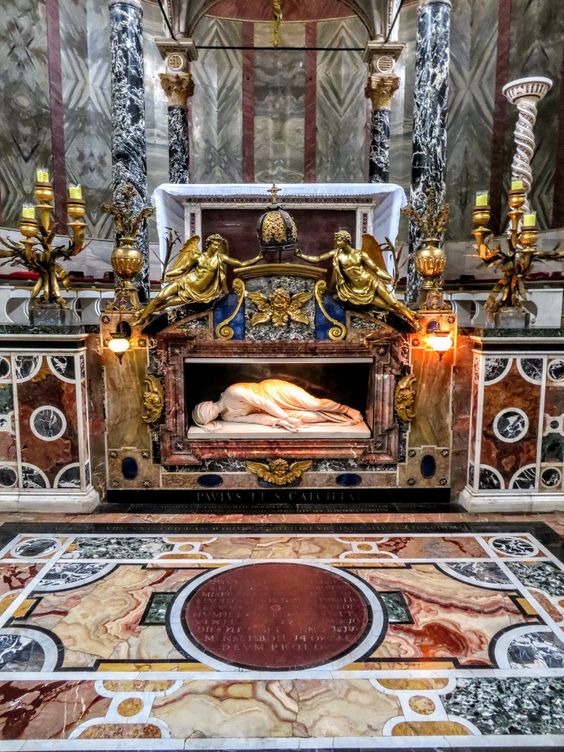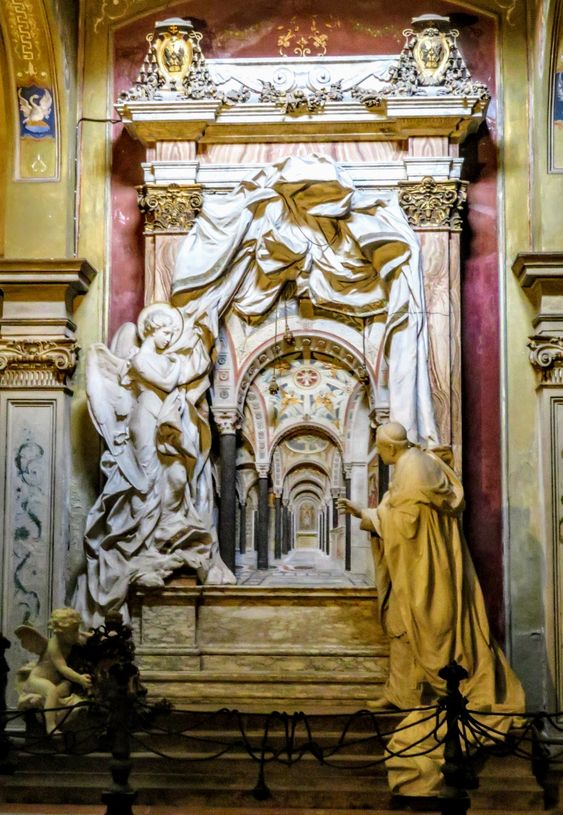- Home
- Walking Tours
- Blog
-
St Peter's Basilica
- Altars
- Baldacchino
- Chair of St Peter
- Chapel of the Baptistery
- Chapel of the Bl. Sacrament
- Chapel of the Choir
- Chapel of the Pieta
- Crossing >
- Dome
-
Monuments
>
- Countess Matilda of Canossa
- Maria Clementina Sobieska
- Queen Christina of Sweden
- Pope Innocent VIII
- Pope Paul III
- Pope Gregory XIII
- Pope Gregory XIV
- Pope Leo XI
- Pope Urban VIII
- Pope Alexander VII
- Pope Clement X
- Pope Innocent XI
- Pope Alexander VIII
- Pope Innocent XII
- Pope Benedict XIV
- Pope Clement XIII
- Pope Pius VII
- Pope Leo XII
- Pope Pius VIII
- Pope Gregory XVI
- Pope Pius X
- Pope Benedict XV
- Pope Pius XI
- Pope Pius XII
- Pope John XXIII
- The Stuarts
- Nave
- Portico >
- Statue of St Peter
- Statues of Founder Saints
- Transept
- Tribune
- St Peter's Square
- Vatican Museums
- Sistine Chapel
-
Fountains
- Trevi Fountain
- Fontana della Barcaccia
- Fontana della Peschiera
- Fountain in Piazza Colonna
- Fountain in Piazza delle Cinque Scole
- Fountain in Piazza dell' Aracoeli
- Fountain in Piazza Nicosia
- Fountain in Piazza di S.M. in Trastevere
- Fountain of Moses
- Fountain of Neptune
- Fountains of Piazza Farnese
- Fountain of Ponte Sisto
- Fountain of the Acqua Paola
- Fountain of the Bees
- Fountain of the Cannonball
- Fountain of the Frogs
- Fountain of the Four Rivers
- Fountain of the Goddess Roma
- Fountain of the Lateran Obelisk
- Fountain of the Mask
- Fountain of the Moor
- Fountain of the Naiads
- Fountain of the Pantheon
- Fountains of Piazza del Popolo
- Fountain of the Porter
- Fountains of St Peter's Square
- Fountain of the Seahorses
- Fountain of the Triton
- Fountain of the Turtles
- Fountains of the Two Seas
- Four Fountains
- Rioni Fountains
- Street Fountains
- Venice Marries the Sea
- On This Day in Rome
-
Churches
- Chiesa del Gesù >
- Chiesa Nuova
- Lateran Baptistery
- San Bartolomeo all' Isola
- San Benedetto in Piscinula
- San Bernardo alle Terme
- San Carlo ai Catinari
- San Carlo al Corso
- San Carlo alle Quattro Fontane
- San Clemente >
- San Crisogono
- San Francesco a Ripa >
- San Giorgio in Velabro
- San Giovanni a Porta Latina
- San Giovanni dei Fiorentini
- San Giovanni in Laterano >
- San Girolamo della Carità >
- San Gregorio Magno
- San Lorenzo fuori le Mura
- San Lorenzo in Damaso
- San Lorenzo in Lucina
- San Luigi dei Francesi >
- San Marcello al Corso
- San Marco
- San Martino ai Monti
- San Nicola in Carcere
- San Pancrazio
- San Paolo fuori le Mura
- San Pietro in Montorio
- San Pietro in Vincoli
- San Saba
- San Salvatore in Lauro
- San Sebastiano fuori le Mura >
- San Silvestro in Capite
- San Vitale
- Sant' Agnese fuori le Mura
- Sant' Agnese in Agone
- Sant' Agostino
- Sant' Alessio
- Sant' Anastasia
- Sant' Andrea al Quirinale
- Sant' Andrea della Valle
- Sant' Andrea delle Fratte
- Sant' Antonio dei Portoghesi
- Sant' Apollinare
- Sant' Eustachio
- Sant' Ignazio di Loyola
- Sant' Ivo alla Sapienza
- Santa Caterina dei Funari
- Santa Cecilia in Trastevere
- Santa Costanza
- Santa Croce in Gerusalemme >
- Santa Francesca Romana
- Santa Maria ad Martyres
- Santa Maria degli Angeli
- Santa Maria dei Miracoli
- Santa Maria del Popolo >
- Santa Maria del Priorato
- Santa Maria della Pace >
- Santa Maria della Vittoria >
- Santa Maria dell' Anima
- Santa Maria dell' Orazione e Morte
- Santa Maria dell' Orto
- Santa Maria di Loreto
- Santa Maria in Aracoeli >
- Santa Maria in Campitelli
- Santa Maria in Cosmedin
- Santa Maria in Domnica
- Santa Maria in Montesanto
- Santa Maria in Trastevere >
- Santa Maria in Via
- Santa Maria in Via Lata
- Santa Maria Maddalena
- Santa Maria Maggiore >
- Santa Maria sopra Minerva >
- Santa Prassede
- Santa Pudenziana
- Santa Sabina >
- Santa Susanna
- Santi Apostoli
- Santi Cosma e Damiano
- Santi Domenico e Sisto
- Santi Giovanni e Paolo
- Santi Luca e Martina
- Santi Nereo e Achilleo
- Santi Quattro Coronati
- Santi Vincenzo e Anastasio
- Santissima Trinità degli Spagnoli
- Santissima Trinità dei Pellegrini
- Santissima Trinità di Monti
- Santissimo Nome di Maria
- Santo Stefano Rotondo
- Palatine
- Forum
-
Ancient Monuments
- Aqueducts
- Ara Pacis
- Arch of Constantine
- Arch of the Money-Changers
- Arch of Janus
- Aurelian Walls
- Baths of Caracalla
- Baths of Diocletian
- Castel Sant' Angelo
- Catacombs of Domitilla
- Circus Maxentius
- Circus Maximus
- Colosseum
- Column of Marcus Aurelius
- Column of Trajan
- Forum of Augustus
- Forum of Trajan
- Mausoleum of Augustus
- Nymphaeum
- Pantheon
- Ponte Fabricio
- Ponte Milvio
- Ponte Rotto
- Ponte Sant' Angelo
- Porta Maggiore
- Porta San Paolo
- Porta San Sebastiano
- Portico of Octavia
- Pyramid of Cestius
- Temple of Hadrian
- Temple of Hercules
- Temple of Portunus
- Theatre of Balbus
- Theatre of Marcellus
- Theatre of Pompey
- Tomb of Caecilia Metella
- Via Appia
-
Obelisks
- 'Minerveo' Obelisk
- 'Flaminio' Obelisk
- 'Matteiano' Obelisk
- 'Lateran' Obelisk
- 'Dogali' Obelisk
- 'Macuteo' Obelisk
- 'Solare' Obelisk
- 'Vatican' Obelisk
- 'Agonalis' Obelisk
- 'Sallustiano' Obelisk
- 'Quirinale' Obelisk
- 'Esquiline' Obelisk
- 'Pinciano' Obelisk
- 'Mediceo' Obelisk
- 'Torlonia' Obelisks
- 'Mussolini' Obelisk
- 'Marconi' Obelisk
-
Mosaics
- Gallery
- Palazzi
- Galleries & Museums
- Piazzas
-
Miscellaneous
- A Calendar of Saints
- A Literary Tour
- Antico Caffè Greco
- Art of the Cosmati
- Babington's Tea Rooms
- Barberini Bees
- Gian Lorenzo Bernini
- Borromini & the Baroque
- Catacombs
- Column of the Immaculate Conception
- Domes
- Equestrian Statues
- EUR
- Fasces
- Flood Plaques
- Funerary Monuments
- House of the Owls
- Jewish Ghetto
- Jubilee Years
- Knights of Malta
- Mithraism
- Monumental Complex of S. Spirito in Sassia
- Ponte Sisto
- Porta Pia
- 'Protestant' Cemetery
- Quartiere Coppedè
- Scala Santa
- Spanish Steps
- 'Talking' Statues
- Tiber Island
- Villa Borghese
- Vittoriano
- Rioni
- On This Day in Italy
-
Pictures from Italy
-
Florence
>
- A Literary Tour
- Anna Maria Luisa: Last of the Medici
- Casa-Galleria Vichi
- Column of Justice
- Column of St Zenobius
- Cosimo I de' Medici
- Cosimo II de' Medici
- Costanza Bonarelli
- David With Fig Leaf
- Elizabeth Barrett Browning
- Equestrian Statue of Cosimo I de' Medici
- Equestrian Statue of Ferdinando I de' Medici
- Festina Lente
- Floods
- Fontana del Bacchino
- Fontana dei Puttini
- Fountain of Neptune
- Fountains of the Marine Monsters
- Gian Gastone de' Medici
- Girolamo Savonarola
- Images of the Annunciation
- Little Devil
- Monument to Cellini
- Palazzo Bartolini-Salimbeni
- Palazzo Bianca Cappello
- Palazzo Fenzi
- Palazzo Viviani
- Perseus and Medusa
- Piazza Santa Maria Novella
- Pope Leo XI
- Porta della Mandorla
- Rape of the Sabine Woman
- Santa Maria Novella
- Canons' Palace
- Statue of Dante
- Theft of the Century
- Torre del Arnolfo
- Twelve Good Men
- Villa Gamberaia
- Wheel of the Innocents
- 'Wine Windows'
- Lazio >
- Tuscany >
-
Venice
>
- Ab Urbe Condita
- Acqua Alta
- Bartolomeo Colleoni
- Barque of Dante
- Burano
- Caffè Florian
- Daniele Manin
- Flagpoles
- Giustina Rossi
- Gondolas
- Harry's Bar
- Henry James
- House of Three Eyes
- King Victor Emmanuel II
- Map of Venice
- Martinmas
- Master of the House
- Palazzo Contarini Fasan
- Ponte Borgoloco
- Ponte Chiodo
- Punta del Dogana
- Scacciadiavoli
- Shrine of St Lucia
- Sior Antonio Rioba
- The 'Book Shitter'
- The Lion's Mouth
- Tommaso Rangone
- Torcello
- Venus
- 'Viennese Oranges'
- Wellheads
- Winged Lions
-
Florence
>
- Popes: 1417-Present
- Cloisters
Santa Cecilia in Trastevere
Santa Cecilia in Trastevere is a 9th century monastic and titular church, and a minor basilica. The church was built by Pope Paschal I (r. 817-24) to house the remains of St Cecilia and her husband St Valerius, which were transferred to the church from the catacombs of San Callisto in 820. According to tradition, the church stands above the house of the saints.
Paschal I appears in the beautiful mosaic in the apse; his halo is rectilinear to show that he was still alive when the mosaic was made. Above his halo, perched on a branch of a palm tree, is a phoenix, a symbol of the Resurrection. In the centre of the mosaic stands Christ with St Paul, St Agatha (wearing a crown) and Paschal I on the left and St Peter, St Valerian and St Cecilia on the right. At the lower level twelve lambs (representing the Apostles) emerge from the cities of Bethlehem and Jerusalem and converge on the Agnus Dei.
The baldacchino (1294) in the sanctuary is the signed work of Arnolfo di Cambio.
On October 20th 1599, during the course of restoration work in the church, two marble sarcophagi were discovered. Cardinal Paolo Emilio Sfondrati, the titular cardinal of the church, had the sarcophagi opened before the presence of witnesses. In one was a wooden casket, which contained the body of St Cecilia. Peering through the veil, which covered her body, they noted that the saint was small of stature and that her head was turned downward. A young sculptor, Stefano Maderno (1576-1636), was commissioned to depict the saint's body exactly as it was found. Maderno's sculpture (1600) is on display in a striking black marble recess, under the high altar.
The Latin inscription, in the pavement before the statue, reads: EN TIBI SANCTISSIMAE VIRGINIS CAECILIAE IMAGINEM QVAM IPSE INTEGRAM SVO SEPVLCHRO IACENTEM VIDI EANDEM TIBI PRORSVS EODEM CORPORIS SITV HOC MARMORE ESPRESSI (Behold for yourself the image of the most holy virgin Cecilia, whom I myself saw lying uncorrupted in her tomb. The same have I rendered for you by this statue in the very same posture as her body).
The facade above the loggia was commissioned by Cardinal Francesco Acquaviva d'Aragona, titular priest of Santa Cecilia between 1709 and 1724, and designed by the Florentine architect Ferdinando Fuga (1699-1782). The cardinal's coat-of-arms is prominently displayed in the tympanum of the pediment and his name is emblazoned on the loggia: FRANCISCVS · TITV · SANCTAE · CAECILIAE · CARD · DE · AQVAVIVA. Below this is a strip of 12th century mosaic in a vine tendril pattern. The scroll work is embellished with flowers, little animals and the faces of six saints.
The grand funerary monument in the loggia is that of Paolo Emilio Sfondrati, the cardinal who arranged the exhumation of St Cecilia in 1599, and who died in 1618.
There is a shallow vestibule inside the entrance to the church, which is separated from the nave by an arcade of five arches. To the right of the main door is the tomb of Adam Easton of Easton in Norfolk, England (died 1398), who was a titular-cardinal of the church. The monument was made by Paolo Romano. On the opposite side is the tomb of Cardinal Niccolò Forteguerri (died 1473), partly the work of the Florentine sculptor Mino da Fiesole. The vault of the vestibule is decorated with images of St Cecilia, St Valerian, St Stephen, St Urban and St Lawrence.
The present appearance of the interior of the church is partly the result of a restoration performed on the orders of the titular Cardinal Acquaviva. The campaign lasted from 1712 to 1728, and the supervising architects were Domenico Paradesi and Luigi Berrettoni. Some older elements were preserved, notably the baldacchino and apse mosaic, but a new ceiling vault was inserted. The fresco of the Coronation of St Cecilia (c. 1727) in the centre of the ceiling is the work of Sebastiano Conca (1680-1764). The galleries above the arcades were enclosed to form passages to a choir above the entrance; these features were for the use of the nuns, who were (and still are) an enclosed order.
The interior was again restored in 1823 by Cardinal Giorgio Doria-Pamphilj Landi, a later titular priest of the church. The problem that this restoration addressed was that the weight of the 18th century ceiling vault was proving too much for the ancient columns of the arcade. The solution was to encase the columns in thicker pillars.
One of the casualties of the remodelling of the church was the loss of much of a fresco of the Last Judgement, which once adorned the counter-facade. What remains of this beautiful fresco, which was painted by Pietro Cavallini (circa 1293), can be seen by visiting the nuns' convent (entrance to the left of the church).
At the end of the right aisle a short corridor leads to the Cappella Rampolla, which was created as a funerary chapel for Cardinal Mariano Rampolla (1843-1913), who was the titular-cardinal of the church from 1887 until his death. He was also the Archpriest of St Peter's Basilica and might easily have been elected pope in 1903. The grand monument (1929) is the work of the sculptor Enrico Quattrini (1864-1950).
The imposing Romanesque bell-tower (c. 1140) was, thankfully, left untouched by the remodelling of the church.
The courtyard in front of the church was just an empty space until 1929 when it was transformed into a garden with a pool in the centre. The centrepiece of the pool is an ancient cantharus, a two-handled vase which once acted as a flower pot.
Paschal I appears in the beautiful mosaic in the apse; his halo is rectilinear to show that he was still alive when the mosaic was made. Above his halo, perched on a branch of a palm tree, is a phoenix, a symbol of the Resurrection. In the centre of the mosaic stands Christ with St Paul, St Agatha (wearing a crown) and Paschal I on the left and St Peter, St Valerian and St Cecilia on the right. At the lower level twelve lambs (representing the Apostles) emerge from the cities of Bethlehem and Jerusalem and converge on the Agnus Dei.
The baldacchino (1294) in the sanctuary is the signed work of Arnolfo di Cambio.
On October 20th 1599, during the course of restoration work in the church, two marble sarcophagi were discovered. Cardinal Paolo Emilio Sfondrati, the titular cardinal of the church, had the sarcophagi opened before the presence of witnesses. In one was a wooden casket, which contained the body of St Cecilia. Peering through the veil, which covered her body, they noted that the saint was small of stature and that her head was turned downward. A young sculptor, Stefano Maderno (1576-1636), was commissioned to depict the saint's body exactly as it was found. Maderno's sculpture (1600) is on display in a striking black marble recess, under the high altar.
The Latin inscription, in the pavement before the statue, reads: EN TIBI SANCTISSIMAE VIRGINIS CAECILIAE IMAGINEM QVAM IPSE INTEGRAM SVO SEPVLCHRO IACENTEM VIDI EANDEM TIBI PRORSVS EODEM CORPORIS SITV HOC MARMORE ESPRESSI (Behold for yourself the image of the most holy virgin Cecilia, whom I myself saw lying uncorrupted in her tomb. The same have I rendered for you by this statue in the very same posture as her body).
The facade above the loggia was commissioned by Cardinal Francesco Acquaviva d'Aragona, titular priest of Santa Cecilia between 1709 and 1724, and designed by the Florentine architect Ferdinando Fuga (1699-1782). The cardinal's coat-of-arms is prominently displayed in the tympanum of the pediment and his name is emblazoned on the loggia: FRANCISCVS · TITV · SANCTAE · CAECILIAE · CARD · DE · AQVAVIVA. Below this is a strip of 12th century mosaic in a vine tendril pattern. The scroll work is embellished with flowers, little animals and the faces of six saints.
The grand funerary monument in the loggia is that of Paolo Emilio Sfondrati, the cardinal who arranged the exhumation of St Cecilia in 1599, and who died in 1618.
There is a shallow vestibule inside the entrance to the church, which is separated from the nave by an arcade of five arches. To the right of the main door is the tomb of Adam Easton of Easton in Norfolk, England (died 1398), who was a titular-cardinal of the church. The monument was made by Paolo Romano. On the opposite side is the tomb of Cardinal Niccolò Forteguerri (died 1473), partly the work of the Florentine sculptor Mino da Fiesole. The vault of the vestibule is decorated with images of St Cecilia, St Valerian, St Stephen, St Urban and St Lawrence.
The present appearance of the interior of the church is partly the result of a restoration performed on the orders of the titular Cardinal Acquaviva. The campaign lasted from 1712 to 1728, and the supervising architects were Domenico Paradesi and Luigi Berrettoni. Some older elements were preserved, notably the baldacchino and apse mosaic, but a new ceiling vault was inserted. The fresco of the Coronation of St Cecilia (c. 1727) in the centre of the ceiling is the work of Sebastiano Conca (1680-1764). The galleries above the arcades were enclosed to form passages to a choir above the entrance; these features were for the use of the nuns, who were (and still are) an enclosed order.
The interior was again restored in 1823 by Cardinal Giorgio Doria-Pamphilj Landi, a later titular priest of the church. The problem that this restoration addressed was that the weight of the 18th century ceiling vault was proving too much for the ancient columns of the arcade. The solution was to encase the columns in thicker pillars.
One of the casualties of the remodelling of the church was the loss of much of a fresco of the Last Judgement, which once adorned the counter-facade. What remains of this beautiful fresco, which was painted by Pietro Cavallini (circa 1293), can be seen by visiting the nuns' convent (entrance to the left of the church).
At the end of the right aisle a short corridor leads to the Cappella Rampolla, which was created as a funerary chapel for Cardinal Mariano Rampolla (1843-1913), who was the titular-cardinal of the church from 1887 until his death. He was also the Archpriest of St Peter's Basilica and might easily have been elected pope in 1903. The grand monument (1929) is the work of the sculptor Enrico Quattrini (1864-1950).
The imposing Romanesque bell-tower (c. 1140) was, thankfully, left untouched by the remodelling of the church.
The courtyard in front of the church was just an empty space until 1929 when it was transformed into a garden with a pool in the centre. The centrepiece of the pool is an ancient cantharus, a two-handled vase which once acted as a flower pot.
Gallery
- Home
- Walking Tours
- Blog
-
St Peter's Basilica
- Altars
- Baldacchino
- Chair of St Peter
- Chapel of the Baptistery
- Chapel of the Bl. Sacrament
- Chapel of the Choir
- Chapel of the Pieta
- Crossing >
- Dome
-
Monuments
>
- Countess Matilda of Canossa
- Maria Clementina Sobieska
- Queen Christina of Sweden
- Pope Innocent VIII
- Pope Paul III
- Pope Gregory XIII
- Pope Gregory XIV
- Pope Leo XI
- Pope Urban VIII
- Pope Alexander VII
- Pope Clement X
- Pope Innocent XI
- Pope Alexander VIII
- Pope Innocent XII
- Pope Benedict XIV
- Pope Clement XIII
- Pope Pius VII
- Pope Leo XII
- Pope Pius VIII
- Pope Gregory XVI
- Pope Pius X
- Pope Benedict XV
- Pope Pius XI
- Pope Pius XII
- Pope John XXIII
- The Stuarts
- Nave
- Portico >
- Statue of St Peter
- Statues of Founder Saints
- Transept
- Tribune
- St Peter's Square
- Vatican Museums
- Sistine Chapel
-
Fountains
- Trevi Fountain
- Fontana della Barcaccia
- Fontana della Peschiera
- Fountain in Piazza Colonna
- Fountain in Piazza delle Cinque Scole
- Fountain in Piazza dell' Aracoeli
- Fountain in Piazza Nicosia
- Fountain in Piazza di S.M. in Trastevere
- Fountain of Moses
- Fountain of Neptune
- Fountains of Piazza Farnese
- Fountain of Ponte Sisto
- Fountain of the Acqua Paola
- Fountain of the Bees
- Fountain of the Cannonball
- Fountain of the Frogs
- Fountain of the Four Rivers
- Fountain of the Goddess Roma
- Fountain of the Lateran Obelisk
- Fountain of the Mask
- Fountain of the Moor
- Fountain of the Naiads
- Fountain of the Pantheon
- Fountains of Piazza del Popolo
- Fountain of the Porter
- Fountains of St Peter's Square
- Fountain of the Seahorses
- Fountain of the Triton
- Fountain of the Turtles
- Fountains of the Two Seas
- Four Fountains
- Rioni Fountains
- Street Fountains
- Venice Marries the Sea
- On This Day in Rome
-
Churches
- Chiesa del Gesù >
- Chiesa Nuova
- Lateran Baptistery
- San Bartolomeo all' Isola
- San Benedetto in Piscinula
- San Bernardo alle Terme
- San Carlo ai Catinari
- San Carlo al Corso
- San Carlo alle Quattro Fontane
- San Clemente >
- San Crisogono
- San Francesco a Ripa >
- San Giorgio in Velabro
- San Giovanni a Porta Latina
- San Giovanni dei Fiorentini
- San Giovanni in Laterano >
- San Girolamo della Carità >
- San Gregorio Magno
- San Lorenzo fuori le Mura
- San Lorenzo in Damaso
- San Lorenzo in Lucina
- San Luigi dei Francesi >
- San Marcello al Corso
- San Marco
- San Martino ai Monti
- San Nicola in Carcere
- San Pancrazio
- San Paolo fuori le Mura
- San Pietro in Montorio
- San Pietro in Vincoli
- San Saba
- San Salvatore in Lauro
- San Sebastiano fuori le Mura >
- San Silvestro in Capite
- San Vitale
- Sant' Agnese fuori le Mura
- Sant' Agnese in Agone
- Sant' Agostino
- Sant' Alessio
- Sant' Anastasia
- Sant' Andrea al Quirinale
- Sant' Andrea della Valle
- Sant' Andrea delle Fratte
- Sant' Antonio dei Portoghesi
- Sant' Apollinare
- Sant' Eustachio
- Sant' Ignazio di Loyola
- Sant' Ivo alla Sapienza
- Santa Caterina dei Funari
- Santa Cecilia in Trastevere
- Santa Costanza
- Santa Croce in Gerusalemme >
- Santa Francesca Romana
- Santa Maria ad Martyres
- Santa Maria degli Angeli
- Santa Maria dei Miracoli
- Santa Maria del Popolo >
- Santa Maria del Priorato
- Santa Maria della Pace >
- Santa Maria della Vittoria >
- Santa Maria dell' Anima
- Santa Maria dell' Orazione e Morte
- Santa Maria dell' Orto
- Santa Maria di Loreto
- Santa Maria in Aracoeli >
- Santa Maria in Campitelli
- Santa Maria in Cosmedin
- Santa Maria in Domnica
- Santa Maria in Montesanto
- Santa Maria in Trastevere >
- Santa Maria in Via
- Santa Maria in Via Lata
- Santa Maria Maddalena
- Santa Maria Maggiore >
- Santa Maria sopra Minerva >
- Santa Prassede
- Santa Pudenziana
- Santa Sabina >
- Santa Susanna
- Santi Apostoli
- Santi Cosma e Damiano
- Santi Domenico e Sisto
- Santi Giovanni e Paolo
- Santi Luca e Martina
- Santi Nereo e Achilleo
- Santi Quattro Coronati
- Santi Vincenzo e Anastasio
- Santissima Trinità degli Spagnoli
- Santissima Trinità dei Pellegrini
- Santissima Trinità di Monti
- Santissimo Nome di Maria
- Santo Stefano Rotondo
- Palatine
- Forum
-
Ancient Monuments
- Aqueducts
- Ara Pacis
- Arch of Constantine
- Arch of the Money-Changers
- Arch of Janus
- Aurelian Walls
- Baths of Caracalla
- Baths of Diocletian
- Castel Sant' Angelo
- Catacombs of Domitilla
- Circus Maxentius
- Circus Maximus
- Colosseum
- Column of Marcus Aurelius
- Column of Trajan
- Forum of Augustus
- Forum of Trajan
- Mausoleum of Augustus
- Nymphaeum
- Pantheon
- Ponte Fabricio
- Ponte Milvio
- Ponte Rotto
- Ponte Sant' Angelo
- Porta Maggiore
- Porta San Paolo
- Porta San Sebastiano
- Portico of Octavia
- Pyramid of Cestius
- Temple of Hadrian
- Temple of Hercules
- Temple of Portunus
- Theatre of Balbus
- Theatre of Marcellus
- Theatre of Pompey
- Tomb of Caecilia Metella
- Via Appia
-
Obelisks
- 'Minerveo' Obelisk
- 'Flaminio' Obelisk
- 'Matteiano' Obelisk
- 'Lateran' Obelisk
- 'Dogali' Obelisk
- 'Macuteo' Obelisk
- 'Solare' Obelisk
- 'Vatican' Obelisk
- 'Agonalis' Obelisk
- 'Sallustiano' Obelisk
- 'Quirinale' Obelisk
- 'Esquiline' Obelisk
- 'Pinciano' Obelisk
- 'Mediceo' Obelisk
- 'Torlonia' Obelisks
- 'Mussolini' Obelisk
- 'Marconi' Obelisk
-
Mosaics
- Gallery
- Palazzi
- Galleries & Museums
- Piazzas
-
Miscellaneous
- A Calendar of Saints
- A Literary Tour
- Antico Caffè Greco
- Art of the Cosmati
- Babington's Tea Rooms
- Barberini Bees
- Gian Lorenzo Bernini
- Borromini & the Baroque
- Catacombs
- Column of the Immaculate Conception
- Domes
- Equestrian Statues
- EUR
- Fasces
- Flood Plaques
- Funerary Monuments
- House of the Owls
- Jewish Ghetto
- Jubilee Years
- Knights of Malta
- Mithraism
- Monumental Complex of S. Spirito in Sassia
- Ponte Sisto
- Porta Pia
- 'Protestant' Cemetery
- Quartiere Coppedè
- Scala Santa
- Spanish Steps
- 'Talking' Statues
- Tiber Island
- Villa Borghese
- Vittoriano
- Rioni
- On This Day in Italy
-
Pictures from Italy
-
Florence
>
- A Literary Tour
- Anna Maria Luisa: Last of the Medici
- Casa-Galleria Vichi
- Column of Justice
- Column of St Zenobius
- Cosimo I de' Medici
- Cosimo II de' Medici
- Costanza Bonarelli
- David With Fig Leaf
- Elizabeth Barrett Browning
- Equestrian Statue of Cosimo I de' Medici
- Equestrian Statue of Ferdinando I de' Medici
- Festina Lente
- Floods
- Fontana del Bacchino
- Fontana dei Puttini
- Fountain of Neptune
- Fountains of the Marine Monsters
- Gian Gastone de' Medici
- Girolamo Savonarola
- Images of the Annunciation
- Little Devil
- Monument to Cellini
- Palazzo Bartolini-Salimbeni
- Palazzo Bianca Cappello
- Palazzo Fenzi
- Palazzo Viviani
- Perseus and Medusa
- Piazza Santa Maria Novella
- Pope Leo XI
- Porta della Mandorla
- Rape of the Sabine Woman
- Santa Maria Novella
- Canons' Palace
- Statue of Dante
- Theft of the Century
- Torre del Arnolfo
- Twelve Good Men
- Villa Gamberaia
- Wheel of the Innocents
- 'Wine Windows'
- Lazio >
- Tuscany >
-
Venice
>
- Ab Urbe Condita
- Acqua Alta
- Bartolomeo Colleoni
- Barque of Dante
- Burano
- Caffè Florian
- Daniele Manin
- Flagpoles
- Giustina Rossi
- Gondolas
- Harry's Bar
- Henry James
- House of Three Eyes
- King Victor Emmanuel II
- Map of Venice
- Martinmas
- Master of the House
- Palazzo Contarini Fasan
- Ponte Borgoloco
- Ponte Chiodo
- Punta del Dogana
- Scacciadiavoli
- Shrine of St Lucia
- Sior Antonio Rioba
- The 'Book Shitter'
- The Lion's Mouth
- Tommaso Rangone
- Torcello
- Venus
- 'Viennese Oranges'
- Wellheads
- Winged Lions
-
Florence
>
- Popes: 1417-Present
- Cloisters
